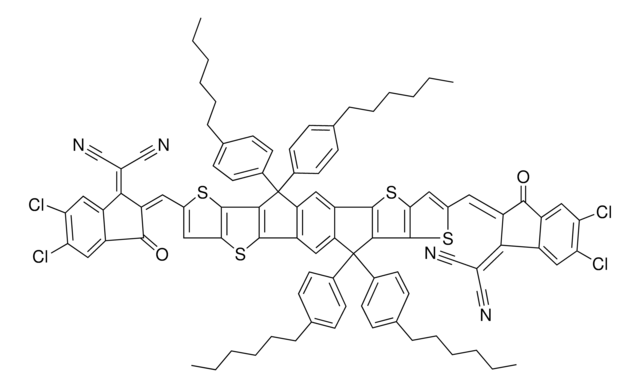935719
Cobalt(II)-nitrat Hexahydrat
≥99.9% trace metals basis
Synonym(e):
Salpetersäure Cobalt(II)-salz
About This Item
Empfohlene Produkte
Qualitätsniveau
Assay
≥99.9% trace metals basis
Form
powder, crystals or granules (Chunks)
Grünere Alternativprodukt-Eigenschaften
Design for Energy Efficiency
Learn more about the Principles of Green Chemistry.
sustainability
Greener Alternative Product
Farbe
faint red to very dark red
mp (Schmelzpunkt)
55 °C (lit.)
Löslichkeit
soluble, clear to slightly hazy
Grünere Alternativprodukt-Kategorie
SMILES String
O.O.O.O.O.O.[Co++].[O-][N+]([O-])=O.[O-][N+]([O-])=O
InChI
1S/Co.2NO3.6H2O/c;2*2-1(3)4;;;;;;/h;;;6*1H2/q+2;2*-1;;;;;;
InChIKey
QGUAJWGNOXCYJF-UHFFFAOYSA-N
Suchen Sie nach ähnlichen Produkten? Aufrufen Leitfaden zum Produktvergleich
Allgemeine Beschreibung
Anwendung
It has also been used as a primary precursor material in the synthesis of Co3O4 nanocrystals in various shapes such as nanosheets, nanocubes, and nanobelts as a catalyst for methane combustion.
Furthermore, the reaction of Cobalt(II) nitrate hexahydrate with Nickel(II) nitrate hexahydrate produces Nickel-cobalt layered double hydroxide nanosheets in presence of methanol and CTAB, which is used as a high-performance electrocatalyst for oxygen evolution.
In addition, Cobalt(II) nitrate hexahydrate precursor powder is calcined to produce Co3O4 nanotubes using the template synthesis method. The Co3O4 nano-tubes, nanorods, and nanoparticles that have been created are used in gas sensing systems and as anode materials for Li-ion batteries
Cobalt hydroxide and layered double hydroxides (CH@LDH) have been synthesized using Cobalt(II)nitrate hexahydrate as a sulfur host for lithium–sulfur batteries.
It is well studied that, Cobalt(II) nitrate hexahydrate is used as a heterogeneous catalyst Co/SiO2 with Silica support, for Fischer−Tropsch Synthesis.
Cobalt(II) Nitrate Hexahydrate is also used as a catalyst for the synthesis of 5-Carboxanilide-dihydropyrimidinone derivatives by the condensation reaction of acetoacetanilide, aldehyde and urea/thiourea.
Signalwort
Danger
Gefahreneinstufungen
Acute Tox. 4 Oral - Aquatic Acute 1 - Aquatic Chronic 1 - Carc. 1B Inhalation - Eye Dam. 1 - Muta. 2 - Ox. Sol. 2 - Repr. 1B - Resp. Sens. 1 - Skin Sens. 1 - STOT RE 2 Inhalation
Zielorgane
Lungs
Lagerklassenschlüssel
5.1B - Oxidizing hazardous materials
WGK
WGK 3
Flammpunkt (°F)
Not applicable
Flammpunkt (°C)
Not applicable
Analysenzertifikate (COA)
Suchen Sie nach Analysenzertifikate (COA), indem Sie die Lot-/Chargennummer des Produkts eingeben. Lot- und Chargennummern sind auf dem Produktetikett hinter den Wörtern ‘Lot’ oder ‘Batch’ (Lot oder Charge) zu finden.
Besitzen Sie dieses Produkt bereits?
In der Dokumentenbibliothek finden Sie die Dokumentation zu den Produkten, die Sie kürzlich erworben haben.
Unser Team von Wissenschaftlern verfügt über Erfahrung in allen Forschungsbereichen einschließlich Life Science, Materialwissenschaften, chemischer Synthese, Chromatographie, Analytik und vielen mehr..
Setzen Sie sich mit dem technischen Dienst in Verbindung.













